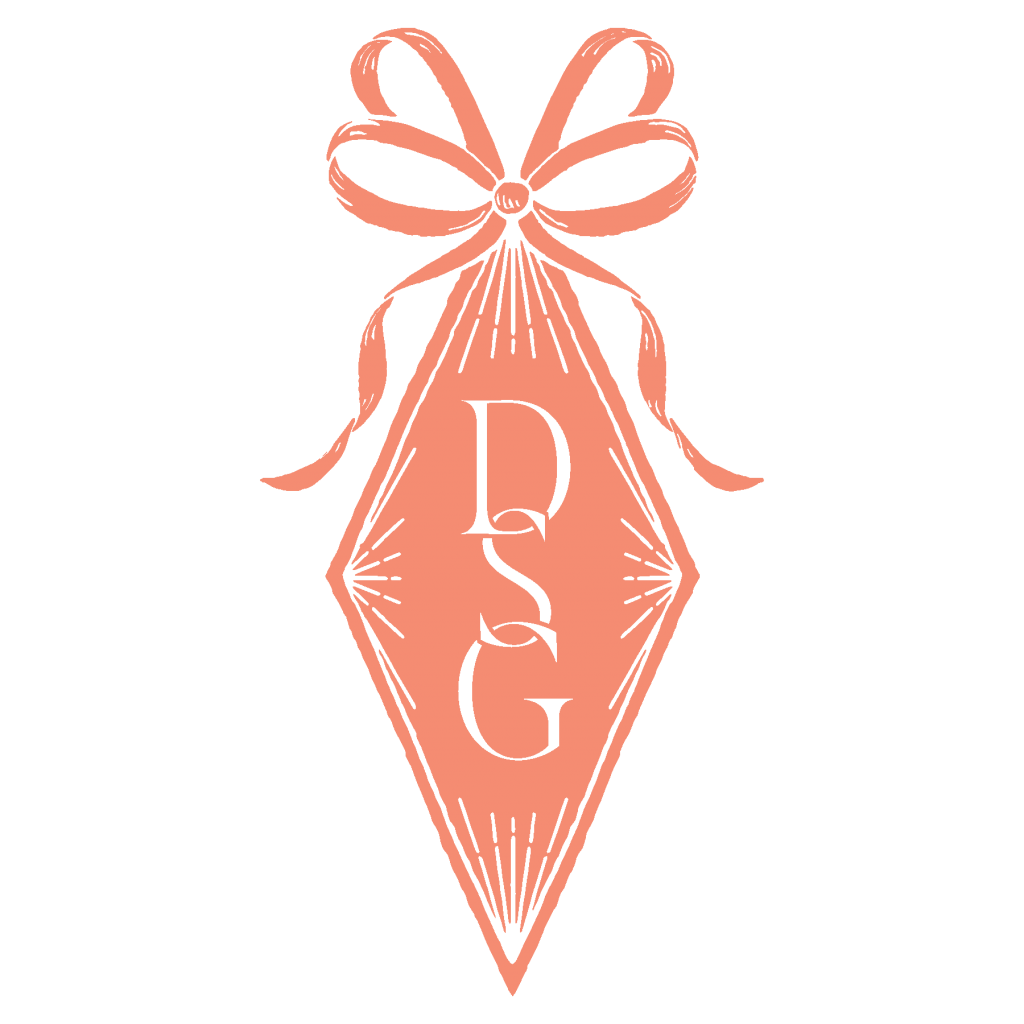 Do you ever get stumped on how to address someone? Either in person or in correspondence? I do! So I did a little research to make sure that I am always respectful in my interactions (and can teach my children properly, too).
Do you ever get stumped on how to address someone? Either in person or in correspondence? I do! So I did a little research to make sure that I am always respectful in my interactions (and can teach my children properly, too).
When I started DoSayGive, I intentionally did not want to call it an “etiquette” blog. For some reason, most etiquette blogs come across as snooty and don’t really provide a reason for doing things properly. I believe etiquette is important, but not for the sake of distinguishing your social status. Instead, I see it as a method to show respect and consideration toward others.
But the thing about etiquette is that it is always evolving. Yes, we can hold tight to the tradition in which we were raised and insist that it is the only way to do things. But history shows us that social patterns are always changing and thus etiquette is too.
For example, there was a time when the only women who were referred to as “Mrs.” were ones with a higher social status. You did not refer to a maid in England or America as Mrs. Smith. She was just Jane. (Unless it was a head housekeeper like Mrs. Hughes in Downton Abbey!).
Interestingly, in the 18th century, “Mrs.” was sometimes used for unmarried women who were businesswomen (a rare feat in that time!).¹ And funny that “Miss” didn’t become a proper way to address adult unmarried women until the mid-18th century. Before that the only adult women referred to as “Miss” were prostitutes.² Yikes!
And then came the feminists in the 20th century who pushed the word “Ms.” (pronounced “Mizz”) into the English language and everything changed again. Now my grandmother, who was a Southern matriarch if there ever was one, would not let that word leave her lips. It was either “Miss” or “Mrs.” for her. But I lived in the Northern part of the U.S. for a time and I can say that most 35-year-old single women working in the city would have been offended at being referred to as “Miss”! Since etiquette is all about consideration and respect, it’s best to respect people’s preferences.
So what do the etiquette experts tell us? Well these days, most will tell you that “Ms.” is now the most acceptable way to address a woman over the age of 18, especially if you don’t know their marital status.³ Now, I will say, in the South it is still proper to refer to an unmarried woman as “Miss”. My daughters refer to unmarried teachers at school as “Miss Smith” and “Miss Jackson”. But again, it’s about being respectful, so it’s best to find out what the person prefers so as not to offend.
Here is a summary of proper etiquette of the most commonly used titles:
Miss, Ms., or Mrs.
Miss – Some still use it for any unmarried woman (I do!). But Emily Post says that it okay, but mainly it is for girls 18 years old and younger.
Mrs. – For married and widowed females. Also acceptable for divorced but seek preference.
Ms. – Can be used for any woman over the age of 18. So when in doubt, you can always use this. Most divorced women prefer this. If a woman is married and keeps her maiden name, refer to her as Ms.
Note: If you are unsure what to use, you can always ask.
Writing a Woman’s Full Name – Do You Still Use Her Husband’s Name?
I was raised to write a married woman’s name as: Mrs. John Smith. It is still technically acceptable although so is Mrs. Jane Smith. When I am addressing an invitation, I will usually use the traditional method. But when I am just writing a thank you note I will write the latter.
Example: Mrs. John Smith or Mrs. Susan Smith.
Writing a Couple’s Name Informally
Again, I was always taught that the woman’s name goes first. As in, Jane and John Smith. I looked this up and this is technically still correct. But, no surprise here, so is the opposite.³
Example: Susan and John Smith or John and Susan Smith.
Writing a Couple’s Name Formally
Example: Mr. and Mrs. John Smith
Thankfully this is an easy one. But if you are addressing a letter to an unmarried couple or a couple in which the wife kept her maiden name, it no longer matters who comes first.
Kept name:
Ms. Susan Smith and Mr. John Dunn
Mr. John Dunn, Ms. Susan Smith, and Family
Unmarried:
Ms. Susan Smith
Mr. John Dunn
BUT…there is an exception to this rule. If one person outranks the other in title (Rev., Dr. Hon., Gen.) then that person should be first.
Example: Dr. Susan Smith and Mr. John Smith.
Mr. and Master
For men 18 and over, use “Mr.” For boys under the age of 18, no title is needed.
Example: Mr. John Smith
According to Amy Vanderbilt’s The Book of Etiquette, in certain geographic regions, “Master” is used for for boy under the age of 8 and only in formal invitations.
Example: Master John Smith
(This is funny, but when we first moved to Dallas I think I wrote “Master” to address little boys we invited to my daughter’s birthday party. That seems kind of ridiculous now, but again, it was just how I saw my mom do it!)
I think it is wise to always keep an etiquette book on hand to answer any last minute social questions (because you really can’t find everything online!). Again, not to be proper just for the sake of being proper, but to be gracious and lovely toward others. So you can always put people at ease — whether you are invited to their occasion or you are inviting them to yours.
I tend to like the more traditional books (older Emily Post or Amy Vanderbilt) but the ones below are all good. The Crane’s book is great if you are planing a wedding (out of print, but you can find it used). It is always good to have a children’s book on manners, too. Any encouragement helps, right?!
I would love your comments on this! Are there any questions you have?
(And side note, my grandmother would tell me not to use the word “woman”; that it wasn’t respectful or feminine. But it just seems strange to write this entire post using the word “lady”!).
(Please note: I quote Emily Post even though I understand it is not the Emily Post of years past. Even though it leans more modern in its view of etiquette, the “Emily Post Institute”, as it is now called, is considered the leading voice in the etiquette world, so I feel it necessary to use it as a source. Although I do reference the more traditional Miss Manners and Amy Vanderbilt.)
¹New York Times Magazine October 20, 2009. http://www.nytimes.com/2009/10/25/magazine/25FOB-onlanguage-t.html?_r=0
²Buxton, Alexander. “When Mistress Meant Mrs. and Miss Meant Prostitute.” The New Republic. September 12, 2014.
³Emily Post Institute.
Pin this post for future reference!





So helpful Lee!
Thank you!
You do not have to be an “uber-feminists” to greatly dislike the use of Mrs. John Smith. I’ll give anything to my husband that has his name in this fashion and I joke, “Oh I guess they though you were a girl!”
I miss my Nana who used to call my little brother Master Paul.
I’ve had several people call me miss Mary since I have been a widow. I kinda like it.
How do you address a married woman using a title with only her first name. Would it be Ms. Susan or Mrs. Susan?
Probably Ms. Susan.
Maybe I’m a traditionalist but I have always loved being Mrs. Andrew Dellinger. My friends refuse to refer to me as such (despite my insistence after we got married, lol), but I love mail that comes to my formal name!
I’ve just gotten divorced for the second time and haven’t changed my name back to my maiden name, even after my first divorce I kept my ex’s last name until I remarried. So what is the etiquette of changing your name once divorced- should I hyphenate it? Do I go by ms. Or mrs. zeiger( maiden) (smith first husbands last name and phots( recent hubby’s last name) And am I to be referred to as Ms. or Mrs?
You are to be referred as Ms. As for the name, it’s up to you what you want to change it to – anything you want!
I’m trying to find out the correct form of address to use when conversing with two unmarried women with the same surname (such as sisters) to whom one has just been introduced. Would it be correct to address them individually using Miss plus their first name, or would that only be used with close acquaintances? I’m particularly interested in 19th century usage but any information would be helpful.
What geographic regions would you say the use of “Master” is appropriate? To specify, this would be for use in responding to a formal invitation.
I think any area of the country, but definitely the South.
This is awesome and even entertaining! Thank you for such great information!
what should we use for girls at age 6 years